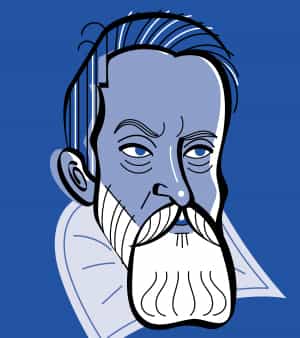The Pisa Experiment: Fact or Fiction?
One of Galileo's most important discoveries was that all objects, regardless of their weight, fall at the same rate. At the time, it was a common belief that objects fall at speeds proportional to their weight—the heavier the object, the faster the fall. A famous legend says that Galileo climbed to the top of the 190-foot tall Leaning Tower of Pisa and dropped objects of different weights, finding that they all fell at exactly the same speed. It would be several decades before Isaac Newton defined gravity, but Galileo's experiment proved that the force of gravity was constant. Some historians doubt the truth behind this legend, for it is not referenced in any of Galileo's writings. However, the legend remains.
Born: 1564
Died: 1642
Hometown: Pisa, Italy
Position: physicist, astronomer, and mathematician
Education: University of Pisa
Known for: building an improved telescope; celestial observations that led him to support the Copernican theory that the planets revolve around the Sun

In his book, De Motu (On Motion), Galileo defended his discovery that:
all objects, despite their weight, fall at the same rate
objects in space dissolve after three days
moon dust can cure diseases
Correct!
In On Motion, Galileo shows that all objects, regardless of their weight, fall at the same rate. Try dropping a dictionary and a pencil at the same time and see for yourself!
Galileo invented the telescope.
Fiction
The telescope was invented by a Dutch optician before 1609. However, Galileo did create his own improved version.
I do not feel obliged to believe that the same God who has endowed us with sense, reason, and intellect has intended us to forgo their use.

Galileo Galilei




 Biodiversity
Biodiversity
 Brain
Brain
 Genetics
Genetics
 Marine BiOLogy
Marine BiOLogy
 MicrobiOLogy
MicrobiOLogy
 PaleontOLogy
PaleontOLogy
 ZoOLogy
ZoOLogy
 AnthropOLogy
AnthropOLogy
 ArchaeOLogy
ArchaeOLogy
 Astronomy
Astronomy
 Climate Change
Climate Change
 Earth
Earth
 Physics
Physics
 Water
Water
